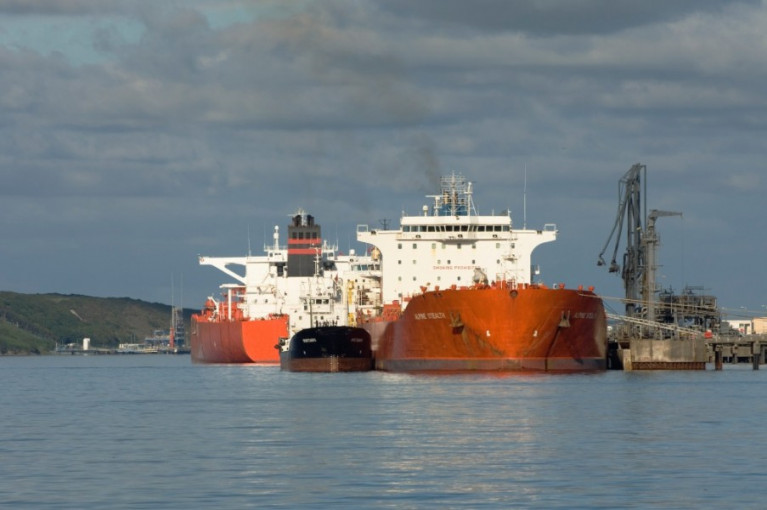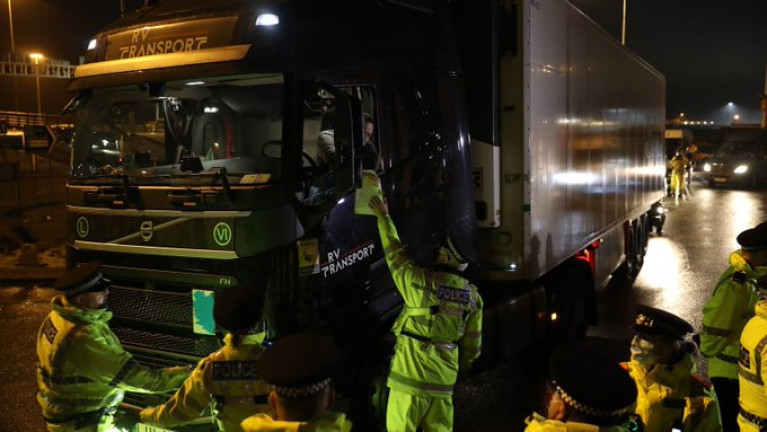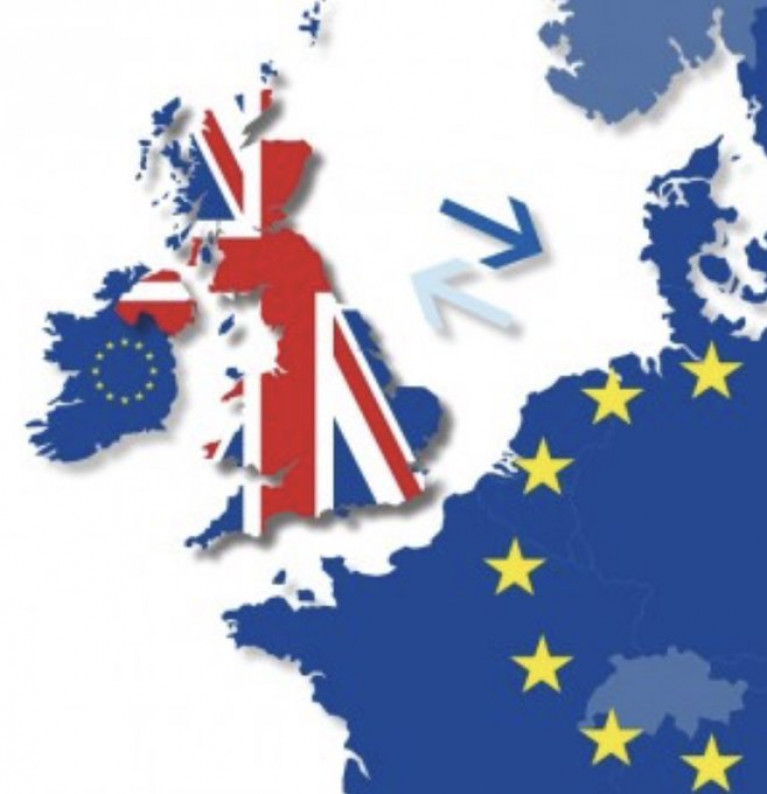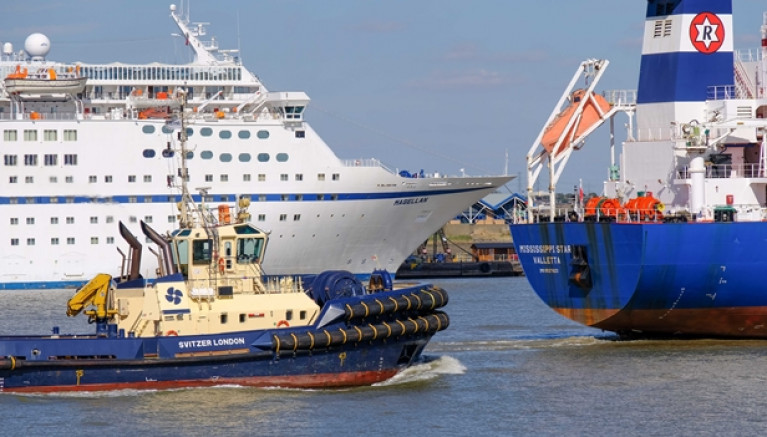Displaying items by tag: UK Ports
Post-Brexit Sees Dozens of UK Ports Apply for 'Freeport' Status
In the UK numerous ports, port groups and ports and logistics consortia appear to have applied for freeport status by last Friday’s deadline set for England by the UK government.
This according to LloydsLoadingList, was to enable applicants seek to attract the associated benefits including investment funding, customs free zone flexibility, and other tax incentives.
The expectation is that as many as 40 ports, port clusters and even airports may have submitted proposals, including some of the biggest names in the UK ports sector, including Dover, Southampton, Felixstowe/Harwich, London Gateway/Tilbury, Hull, Port of Tyne, Teesport, Bristol, Milford Haven and Grangemouth.
The benefits for those that are successful in their bids to gain freeport status include favourable customs duties and processing, suspension of VAT, business rates relief, zero national insurance contributions, enhanced capital allowances, simplified planning and development rules and stamp duty reliefs, Lloyd’s List highlights.
Various ports groups have confirmed they have submitted applications, including a joint application by London Gateway, Tilbury and Ford Dagenham, where the carmaker has an engine plant. The FT reports that at least two UK airports, East Midlands, and Bournemouth International – which has teamed up with nearby port of Poole — may also have bid.
Although Brexit supporters have long championed freeports as a benefit of leaving the EU, critics have pointed out that the UK had several freeports while it was within the EU and had eliminated them in 2012 under a previous Conservative-led coalition government. Others have argued that EU membership provided all of the benefits of freeports and much more, which was why they fell out of favour in the UK.
For much more including Post-Brexit customs and trading complications click this link.
Trucks: UK Warns It May Take 'a Few Days' to Clear Backlog at Ports
The UK has warned it may take a "few days" to clear the backlog of around 4,000 lorries waiting to cross the English Channel.
A mass testing programme, reports RTE News , for lorry drivers is to get under way to alleviate congestion at ferry ports after an agreement was reached to reopen the border between France and Britain.
British Cabinet minister Robert Jenrick told Sky News that drivers will receive rapid lateral flow tests, which can give results in about 30 minutes, followed by a PCR test if they come back positive.
Those who return a second positive result will be offered "Covid-secure" hotel accommodation.
Mr Jenrick said he hoped HGVs would begin crossing the Channel this morning as drivers undergo Covid-19 testing.
Further reading here on this story.
UK port representatives have welcomed a £200m (US$250m) government fund launched last Friday to boost the nation's port infrastructure to prepare for the end of the UK’s transition period from the EU at the end of this year, but warned that “time is short”.
Richard Ballantyne Chief Executive of the British Ports Association (BPA) , which represents ports that facilitate 86% of UK trade including all the UK’s main roll-on roll-off (ro-ro) gateways, said the funding was expected to be particularly relevant for ro-ro terminals and operators.
The BPA chief executive added: “The ports industry has welcomed the launch of UK government’s new Port Infrastructure Fund as part of the preparations for life outside the European Union. The scheme will enable ports in England, Scotland and Wales to bid funding for capital projects for infrastructure that will be used to accommodate new customs and border process in 2021.”
“We welcome this fund and the focus on preparing port infrastructure for what will need accommodate a significant change in our trading relationship with the EU. It’s clear that without support there would not be the capacity to deal the new customs and borders requirements. We therefore welcome this scheme which importantly will be open to all port operators across Great Britain.
For further reading LloydsLoadingList reports.
Port Figures in UK Show Extent of Trade Downturn
Freight tonnage volumes moving through the UK’s ports fell by nearly a fifth in the second quarter of 2020, as the full impact of the pandemic took its toll, according to figures from the Department of Transport.
Total volumes fell, LloydsLoadingList reports, by 18% to 96.1m tonnes, but the effect on unitised freight carried by containers, trucks and trailers fell by 44% to 3.2m units.
The figures followed a first-quarter fall in volumes of 6% compared with the previous year and confirmed the impact of the coronavirus backdrop on trade flows.
“The dramatic fall in unitised traffic during this period is not surprising, as containers and freight carried by trucks are a good barometer of the performance of the overall economy,” said British Ports Association policy analyst Phoebe Warneford-Thomson.
“This fall represents a decline in finished goods bound for the high street as well as raw materials for manufacturing sites, both of which largely suspended operations during the lockdown.”
For futher analysis of the figures including ferry passenger traffic consult here.
Launch By British Ports Association of New Covid-19 Info-Hub & Employment Implications for Ports
The UK ports industry undertakes a vital role in Britain's economy, facilitating trade, fuel, energy, fishing, recreation and tourism. All tiers of the UK Government and the industry are committed to ports staying open to help sustain the country during this challenging time.
The British Ports Assocation (BPA) has been working flat-out to support the industry with regular calls and correspondence with the UK and devolved Governments on everything from business support and key workers, to security and fishing. We are also continuing to push for an expansion of testing and protective equipment for ports’ essential key workers.
Given the volume of information and guidance being issued on a daily basis from Government(s) and numerous agencies, the BPA is now signposting all of this content in one place in a clear and concise manner.
Ports have been receiving daily updates on a wide range of topics as they are announced, but the BPA recognise this can be overwhelming so have gathered everything in one place.
In cooperation with the UK Government, the Association will be keeping the hub up to date with the latest Government guidance and information. The BPA represents 86% of the ports by trade volume in the UK and our members manage around 400 ports, harbours and terminals, however this hub is very much open to all.
www.britishports.org.uk/coronavirus
The BPA are closely working with its members to help answer any questions they have and feed any concerns onto government where relevant. Industry best practice is also being developed where processes and procedures need to be amended to take into consideration the new way of working, for example operating pilot cutters and managing vessels whilst taking into account government’s strict new social distancing requirements.
To further support the UK ports sector, the BPA has asked the ports and maritime law firm Hill Dickinson, an Associate Member of the British Ports Association (BPA), to produce a short paper on the employment implications for UK ports as the shipping industry addresses the global coronavirus pandemic.
This paper is part of the BPA’s Port Futures Programme which is a series of papers considering emerging and innovative trends in the port sector. This article is part of a forthcoming wider piece of work from Hill Dickinson and the BPA examining the potential impacts of pandemics on port.
The BPA will be holding an online webinar later this week for its port members that will address the issues outlined in this paper with the support of employment lawyer and Associate Mark Cranshaw from Hill Dickinson.
The BPA’s Corporate Services Manager, Sara Walsh, comments:
”This new information hub is the go-to ports industry resource on coronavirus and we are encouraging those across the sector to share with contacts both internal and external to their organisations.
During this rather unusual and challenging time all UK ports are under a lot of pressure and are having to make difficult decisions about how best to maintain their workforce so critical tasks are performed and legal duties met, whilst also supporting staff who are working at home or are self-isolating.
We are pleased to be working with the ports and maritime law firm Hill Dickinson to produce this short paper and host an online webinar for our members that addresses the various employment implications and challenges for all UK ports.”
Mark Cranshaw, Associate at Hill Dickinson, also adds:
”The vast majority of those working at UK ports are considered to have ‘key worker’ status which provides an exception to the government’s strict social distancing guidance to stay at home and permits travel for work purposes (where work cannot be performed from home). Like many other sectors who have ‘key workers’, this presents as a unique and unprecedented challenge for all UK ports.
Employers are having to consider which roles can be performed remotely, and where this is not possible, implementing procedures for shift working, social distancing and hand washing. Organisations also need to ensure adequate PPE is made available, where appropriate. Ports have a statutory duty to remain open, where it is safe to do so, but must also ensure the protection of all port users, including visitors, workers and employees. Port users should continue to monitor government advice and take advantage of the various support packages available, but organisations should also be mindful of both their statutory and contractual obligations in relation to employees.”
To Download a paper click: employment implications for UK ports

































































